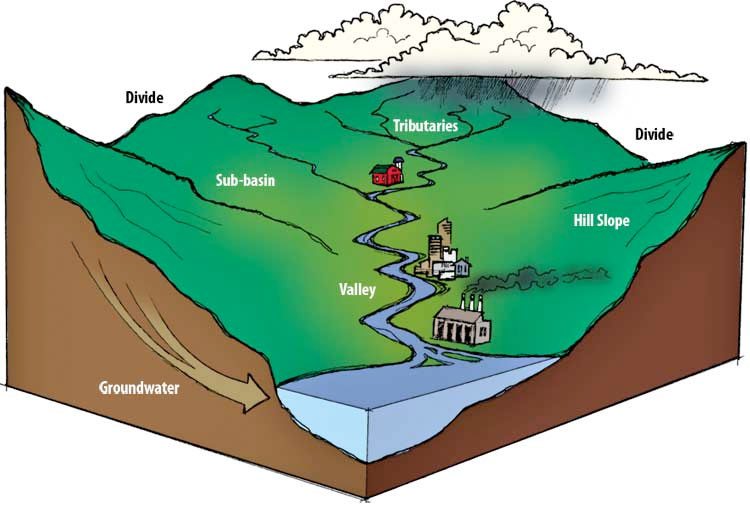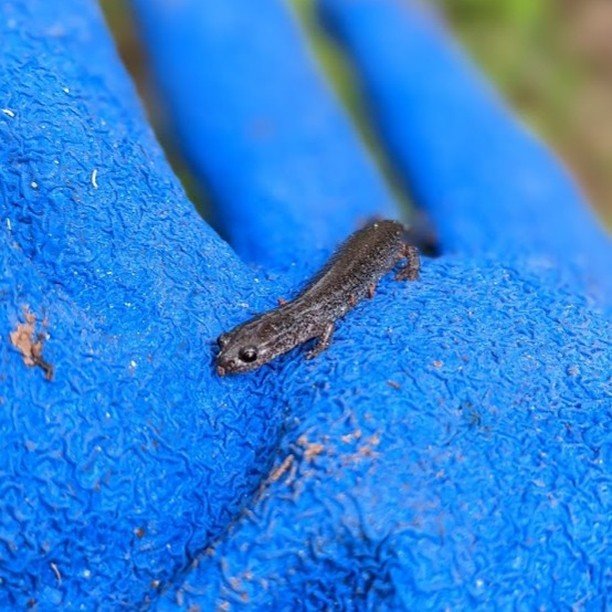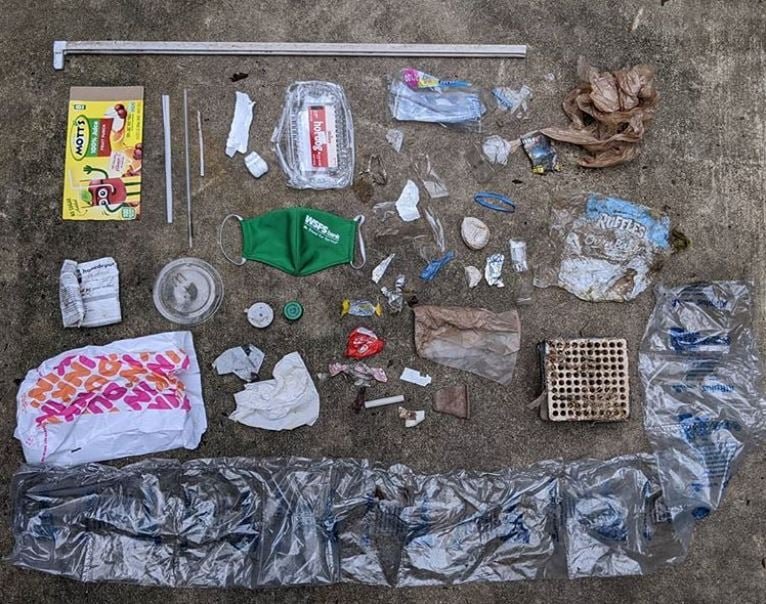What is a Watershed?
You are in a watershed right now, no matter where you are on Earth. A watershed is an area of land where water drains to. It encompasses all land, surface water, and groundwater underneath. The boundaries of a particular watershed can be defined by tracing a line along the highest elevations between two areas on a map (often a mountain ridge or divide) within which water flows to a common body of surface water (i.e., stream, river, lake, or ultimately, the ocean). Surface water is comprised of shallow ground water discharges (i.e., springs or seeps) and runoff from precipitation events. Please view the watershed diagram below.
Source: Primary components of a watershed (Heathcote, 1998).
A watershed also includes the groundwater that lies beneath the land surface and is associated with the surface water bodies. Groundwater infiltrates into the underlying soils and rocks. The underground boundaries of the ground water that discharge into the surface water body do not necessarily correlate to the surface topography and boundaries of the watershed; rather they are directly related to the underlying geology (rocks and soils) of the area.
The groundwater and surface water within a watershed is the primary source of drinking water to its residents (both human and animal alike!).
If you are in New Hope or Solebury, PA, you maybe specifically in the Aquetong watershed, which drains into the Delaware River, eventually travelling to the Atlantic Ocean. Find out more about the Aquetong Watershed.





